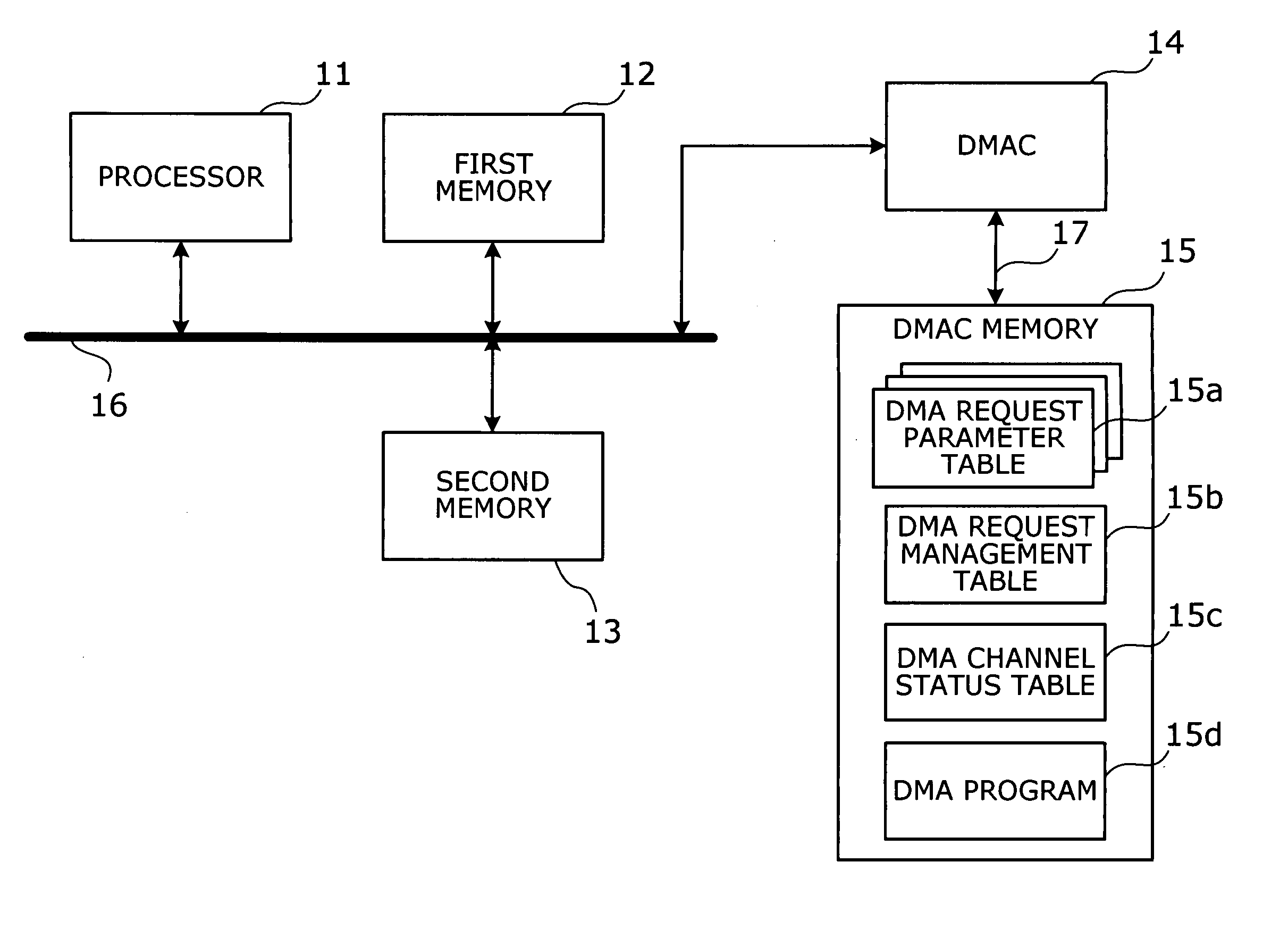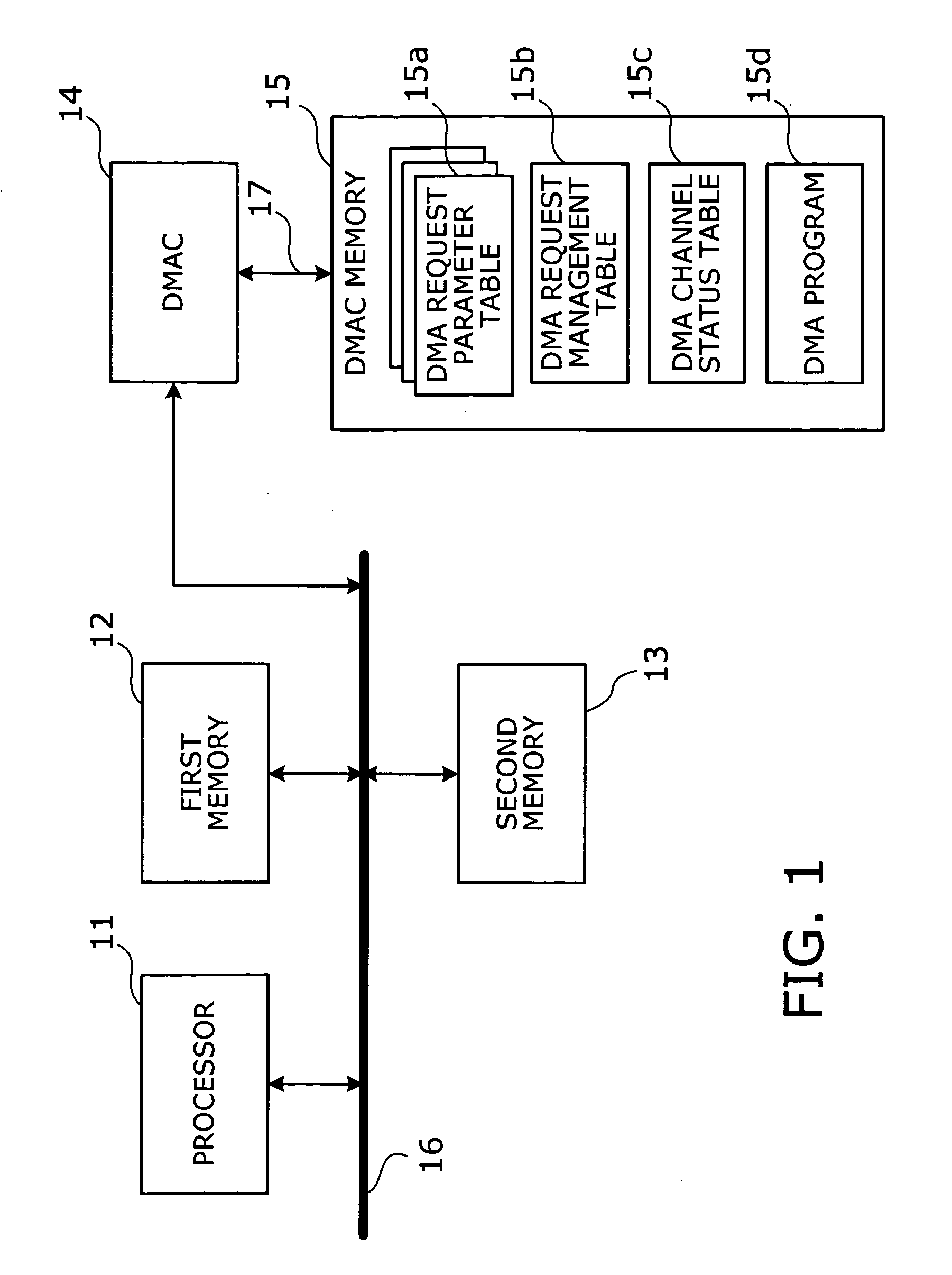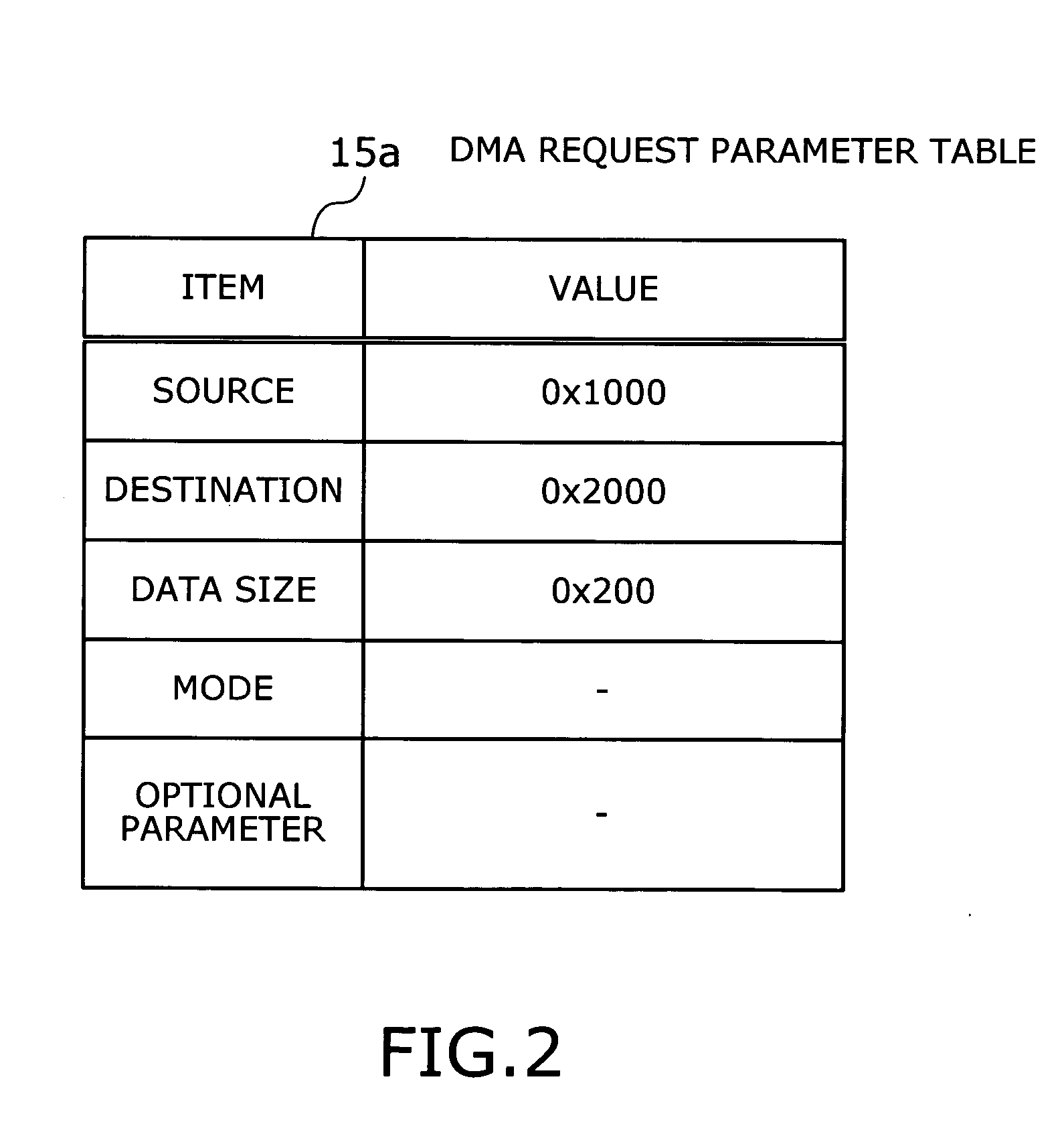System and method for controlling DMA data transfer
a data transfer and control system technology, applied in the field of data transfer control systems, can solve the problems of increasing processing overhead, limited functional flexibility of dmacs with hardware-oriented design, and failing to provide the necessary features of other applications
- Summary
- Abstract
- Description
- Claims
- Application Information
AI Technical Summary
Benefits of technology
Problems solved by technology
Method used
Image
Examples
first embodiment
[0061]FIG. 1 shows an example system configuration according to a first embodiment of the present invention. This embodiment represents the basic concept of the invention. In the illustrated system, a processor 11 and first and second memories 12 and 13 are connected to a DMA controller (DMAC) 14 via a bus 16. A DMAC memory 15 is connected to the DMAC 14 through a dedicated bus 17. The processor 11 controls the entire system, using the first and second memories 12 and 13 to store data for system operation. The DMAC 14 is a circuit that controls data transfer between specified memory areas. In response to a DMA request, the DMAC 14 executes a data transfer according to a DMA program 15d and related data stored in the DMAC memory 15. The DMAC 14 is a programmable circuit specially designed for DMA control, which includes an instruction decoder that decodes instructions of the DMA program 15d, and an address generator circuit that produces read and write address signals for use in DMA ...
second embodiment
[0087] This section describes a second embodiment of the present invention, which allows the number of DMA channels to be varied easily. Generally speaking, different system applications require different numbers of DMA channels. However, ordinary hard-wired DMA functions can only provide a fixed number of channels. This means that, in some cases, existing DMAC devices offer more DMA channels than required, or in other cases, they are unable to provide a required number of channels, thus imposing an increased load on the host processor in managing many DMA requests with an insufficient number of channels.
[0088] The second embodiment of the present invention offers multi-channel DMA transfer capabilities by using a DMA request management table of the first embodiment to control each DMA channel, as well as newly employing a channel management table to manage a plurality of DMA request management tables created in a DMAC memory area. Within the limit of memory capacity, the DMAC can ...
third embodiment
[0110] This section describes a third embodiment of the present invention, which focuses on how a host processor is involved in the control of a DMAC. FIG. 10 shows an example system configuration according to the third embodiment of the invention. In this system, a host processor 21 is connected to a first memory 22, a DMAC 24, and a DMAC memory 25 through a first bus 26. The host processor 21 is also coupled directly to the DMAC 24 through a special bus 28. A second memory 23 is disposed on another bus 27, and the first memory 22 and DMAC 24 are coupled to this second memory 23 via that second bus 27. The DMAC 24 is further coupled to a DMAC memory 25 via a bus 29. The special bus 28 is used to send and receive control signals including a reset signal and transfer completion signal, allowing the host processor 21 to make access to the DMAC memory 25 so as to change DMA programs and control DMA transfer timings.
[0111] Conventional hardware-implemented DMACs cannot change their fun...
PUM
 Login to View More
Login to View More Abstract
Description
Claims
Application Information
 Login to View More
Login to View More - R&D
- Intellectual Property
- Life Sciences
- Materials
- Tech Scout
- Unparalleled Data Quality
- Higher Quality Content
- 60% Fewer Hallucinations
Browse by: Latest US Patents, China's latest patents, Technical Efficacy Thesaurus, Application Domain, Technology Topic, Popular Technical Reports.
© 2025 PatSnap. All rights reserved.Legal|Privacy policy|Modern Slavery Act Transparency Statement|Sitemap|About US| Contact US: help@patsnap.com



